Grow tomatoes at home, even if you think you have a black thumb! Have you ever dreamed of biting into a sun-warmed, juicy tomato, bursting with flavor that no store-bought variety can ever match? I know I have! For centuries, cultivating your own food, including these vibrant red gems, has been a source of pride and sustenance. From ancient Aztec gardens to Italian courtyards overflowing with vines, the tomato has a rich history intertwined with human connection to the earth.
But let’s be honest, the thought of starting a garden can feel overwhelming. Where do you even begin? That’s where these simple, yet effective, DIY tricks and hacks come in. I’m going to share some of my favorite secrets to help you grow tomatoes at home successfully, no matter your experience level or the size of your space. Whether you have a sprawling backyard or just a sunny balcony, you can enjoy the satisfaction of harvesting your own delicious tomatoes.
Imagine skipping the grocery store lines and instead, strolling into your own little oasis to pick the perfect tomato for your salad, sandwich, or homemade sauce. These DIY tips will not only save you money but also connect you to the natural world in a deeply rewarding way. So, grab your gardening gloves, and let’s get started on this exciting journey together!
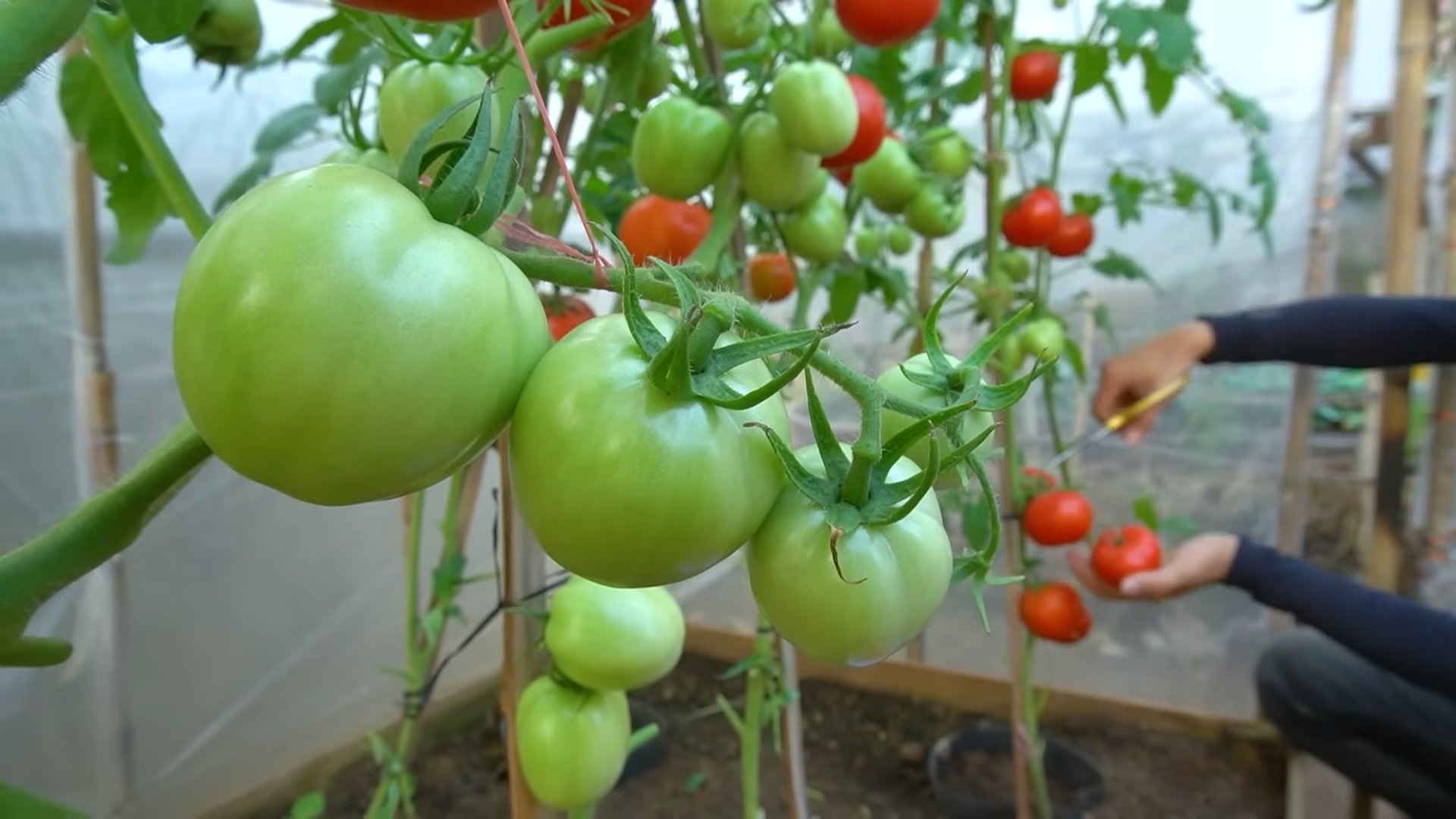
Growing Delicious Tomatoes at Home: A DIY Guide
Hey there, fellow gardening enthusiasts! I’m so excited to share my tried-and-true method for growing juicy, flavorful tomatoes right in your own backyard (or even on your balcony!). Forget those bland, store-bought tomatoes – nothing beats the taste of homegrown goodness. This guide will walk you through every step, from choosing the right variety to harvesting your bounty. Let’s get started!
Choosing Your Tomato Varieties
Before we get our hands dirty, let’s talk about tomato varieties. There are literally hundreds to choose from, and the best one for you will depend on your climate, space, and taste preferences.
* Determinate vs. Indeterminate: This is the first big decision. Determinate tomatoes grow to a certain size and then produce all their fruit at once, making them ideal for canning. Indeterminate tomatoes, on the other hand, keep growing and producing fruit throughout the season. They’ll need staking or caging.
* Cherry Tomatoes: These small, sweet tomatoes are perfect for snacking and salads. They’re generally easy to grow and prolific producers.
* Roma Tomatoes: These are the classic paste tomatoes, perfect for making sauces and salsas.
* Beefsteak Tomatoes: These are the big boys, known for their meaty texture and rich flavor. They’re great for sandwiches and burgers.
* Heirloom Tomatoes: These are older varieties that have been passed down through generations. They often have unique flavors and colors.
I personally love growing a mix of cherry tomatoes (Sungold is my absolute favorite!), Roma tomatoes for sauce, and a few beefsteak varieties for slicing. Experiment and find what you like best!
Starting Your Tomato Seeds (or Buying Seedlings)
You have two options here: start your own seeds indoors or buy seedlings from a nursery. Starting seeds gives you more control over the varieties you grow and can save you money, but it requires a bit more effort.
Starting Seeds Indoors:
* When to Start: Start your seeds 6-8 weeks before the last expected frost in your area.
* What You’ll Need:
* Seed starting trays or small pots
* Seed starting mix (not regular potting soil)
* Grow lights (optional, but highly recommended)
* Heat mat (optional, but helpful)
* Spray bottle
* The Process:
1. Prepare Your Trays: Fill your seed starting trays or pots with seed starting mix. Gently pat it down.
2. Sow the Seeds: Make a small indentation in the soil (about 1/4 inch deep) and drop in 2-3 seeds per cell or pot. Cover lightly with soil.
3. Water Gently: Use a spray bottle to moisten the soil. Avoid overwatering, which can lead to damping off (a fungal disease that kills seedlings).
4. Provide Warmth and Light: Place your trays on a heat mat (if using) and under grow lights. If you don’t have grow lights, place them in a sunny window, but be aware that they may become leggy (tall and spindly) without supplemental light.
5. Keep the Soil Moist: Check the soil daily and water as needed to keep it moist but not soggy.
6. Thin the Seedlings: Once the seedlings have their first true leaves (the second set of leaves that appear after the initial seed leaves), thin them to one seedling per cell or pot. Snip off the weaker seedlings at the soil line with scissors.
7. Harden Off the Seedlings: About a week before you plan to transplant them outdoors, start hardening off the seedlings. This means gradually exposing them to outdoor conditions. Start by placing them outside for an hour or two each day in a sheltered location, gradually increasing the amount of time they spend outdoors.
Buying Seedlings:
* Choosing Healthy Seedlings: Look for seedlings that are stocky, green, and have a healthy root system. Avoid seedlings that are leggy, yellowed, or have signs of disease or pests.
* Timing: Buy your seedlings a week or two before you plan to transplant them outdoors.
Preparing Your Garden Bed
Tomatoes need plenty of sunshine (at least 6-8 hours per day) and well-drained soil.
* Choosing a Location: Select a spot in your garden that gets plenty of sun.
* Soil Preparation:
1. Clear the Area: Remove any weeds, rocks, or debris from the area.
2. Amend the Soil: Tomatoes are heavy feeders, so it’s important to amend the soil with plenty of organic matter. Add compost, aged manure, or other organic amendments to improve drainage and fertility. I usually add a generous amount of compost and some bone meal for phosphorus.
3. Test the Soil pH: Tomatoes prefer a soil pH of 6.0-6.8. You can test your soil pH with a soil testing kit. If your soil is too acidic, add lime to raise the pH. If it’s too alkaline, add sulfur to lower the pH.
4. Till or Dig: Till the soil to a depth of at least 12 inches, or dig it over with a shovel. This will help to loosen the soil and improve drainage.
Transplanting Your Tomato Seedlings
Now for the fun part – getting those little plants into the ground!
1. Choose a Cloudy Day: Transplanting on a cloudy day will help to reduce stress on the seedlings.
2. Dig Holes: Dig holes that are slightly larger than the root balls of your seedlings. Space the holes 2-3 feet apart, depending on the variety of tomato you’re growing. Indeterminate varieties will need more space than determinate varieties.
3. Add Fertilizer: Add a small amount of slow-release fertilizer to each hole. I like to use a tomato-specific fertilizer.
4. Remove Seedlings from Pots: Gently remove the seedlings from their pots. If the roots are circling the bottom of the pot, gently loosen them before planting.
5. Plant Deep: Plant the seedlings deep, burying the stem up to the first set of leaves. Tomatoes can grow roots along their stems, so planting them deep will help them develop a stronger root system.
6. Water Thoroughly: Water the seedlings thoroughly after planting.
7. Mulch: Apply a layer of mulch around the plants to help retain moisture, suppress weeds, and regulate soil temperature. I like to use straw or shredded leaves.
Supporting Your Tomato Plants
Indeterminate tomato varieties need support to keep them from sprawling on the ground.
* Staking: Drive a sturdy stake into the ground next to each plant. As the plant grows, tie the stem to the stake with soft twine or plant ties.
* Caging: Place a tomato cage around each plant. Make sure the cage is tall enough to accommodate the mature size of the plant.
* Trellising: Train the plants to grow along a trellis. This is a good option for smaller gardens.
I prefer using cages because they provide good support and allow the plants to grow naturally.
Caring for Your Tomato Plants
* Watering: Water your tomato plants deeply and regularly, especially during hot, dry weather. Aim to water at the base of the plant to avoid wetting the foliage, which can lead to disease.
* Fertilizing: Fertilize your tomato plants every 2-3 weeks with a tomato-specific fertilizer.
* Pruning: Prune your tomato plants to improve air circulation and encourage fruit production. Remove suckers (the small shoots that grow between the main stem and the branches) from indeterminate varieties.
* Pest and Disease Control: Keep an eye out for pests and diseases. Common tomato pests include aphids, tomato hornworms, and whiteflies. Common tomato diseases include early blight, late blight, and blossom end rot. Treat any problems promptly with appropriate organic or chemical controls. I always try organic methods first!
Harvesting Your Tomatoes
The moment we’ve all been waiting for!
* When to Harvest: Harvest your tomatoes when they are fully colored and slightly soft to the touch.
* How to Harvest: Gently twist the tomato off the vine.
* Storing: Store your tomatoes at room temperature. Refrigerating them can affect their flavor and texture.
Enjoy your delicious homegrown tomatoes! Use them in salads, sauces, sandwiches, or just eat them straight off the vine. There’s nothing quite like the taste of a homegrown tomato. Happy gardening!
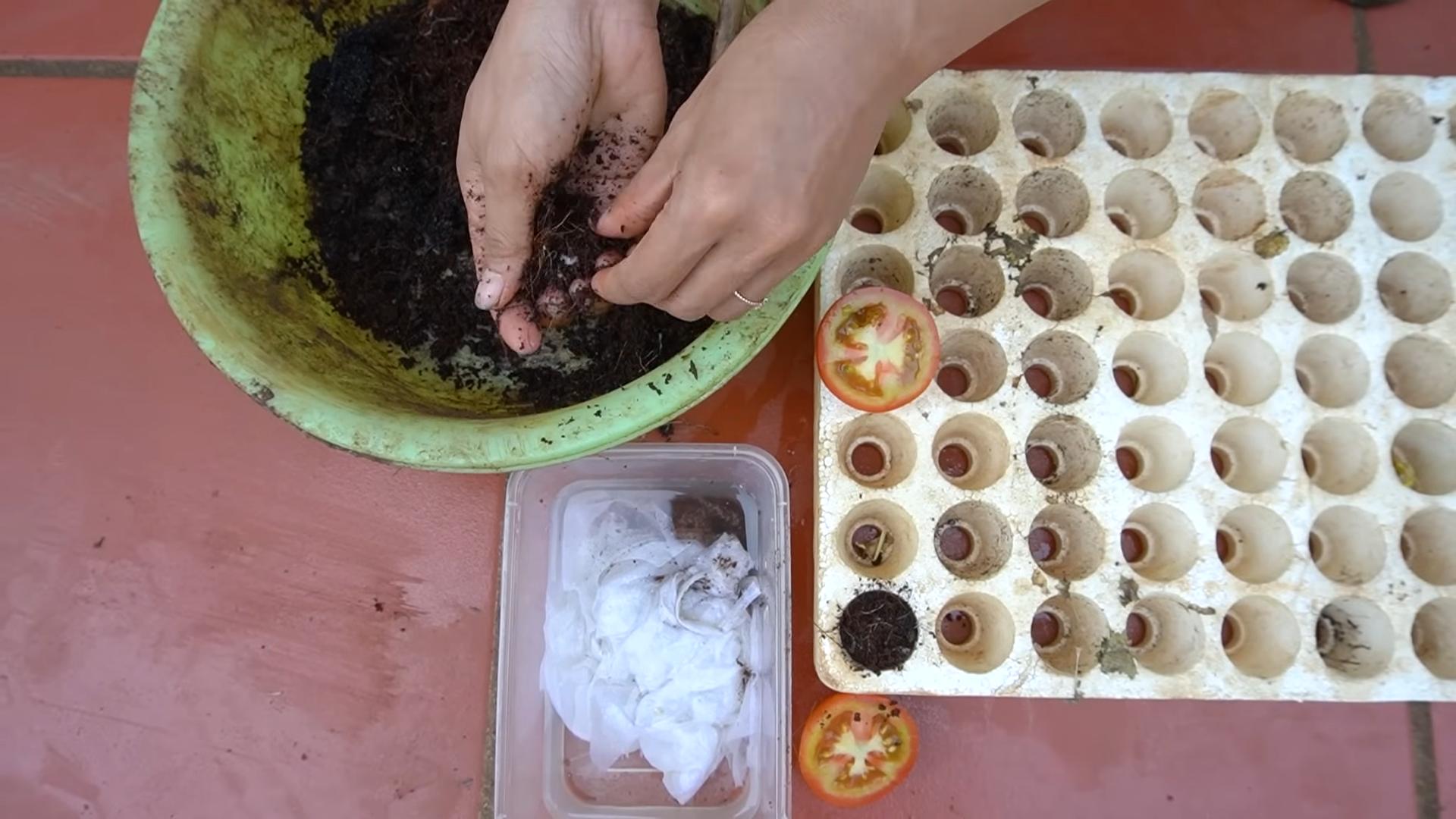
Conclusion
So, there you have it! Growing tomatoes at home isn’t just a gardening trend; it’s a rewarding experience that puts fresh, flavorful produce right at your fingertips. We’ve explored a simple yet effective DIY trick that can significantly boost your tomato yield and overall plant health. This method, focusing on [DIY trick name – insert the specific DIY trick you’re focusing on in the article, e.g., “deep planting,” “egg shell calcium boost,” “companion planting with basil,” etc.], is a game-changer for both novice and experienced gardeners alike.
Why is this a must-try? Because it addresses some of the most common challenges faced when growing tomatoes. Whether it’s providing extra support for sprawling vines, enriching the soil with essential nutrients, or naturally deterring pests, this DIY trick offers a practical and cost-effective solution. Imagine biting into a juicy, sun-ripened tomato that you nurtured from seed to harvest, knowing that you played a direct role in its deliciousness. That’s the power of growing tomatoes at home!
But don’t stop there! Experiment with variations to tailor this trick to your specific needs and growing conditions. For example, if you’re using the eggshell trick, try crushing the shells into different sizes to see which works best for nutrient absorption. If you’re deep planting, consider adding a handful of compost to the planting hole for an extra boost. If you’re companion planting, research other beneficial plants that thrive alongside tomatoes, such as marigolds or nasturtiums. The possibilities are endless!
We wholeheartedly encourage you to give this DIY trick a try. It’s a small investment of time and effort that yields a bountiful return in the form of delicious, homegrown tomatoes. And most importantly, we want to hear about your experience! Share your photos, tips, and stories in the comments below. Let’s build a community of tomato-growing enthusiasts who are passionate about sharing their knowledge and helping each other succeed.
Growing tomatoes at home is more than just a hobby; it’s a connection to nature, a source of fresh, healthy food, and a rewarding experience that you can share with your family and friends. So, grab your gardening gloves, get your hands dirty, and start growing your own delicious tomatoes today! You won’t regret it.
Frequently Asked Questions (FAQ)
Q: What are the best tomato varieties to grow at home?
A: The best tomato varieties for home growing depend on your climate, space, and personal preferences. Determinate varieties, like Roma or Celebrity, are bush-type tomatoes that grow to a certain size and produce all their fruit at once, making them ideal for smaller gardens or container growing. Indeterminate varieties, like Beefsteak or Cherry tomatoes, continue to grow and produce fruit throughout the season, requiring more space and support. Heirloom varieties, like Brandywine or Cherokee Purple, are known for their unique flavors and colors, but they may be more susceptible to diseases. Consider your local climate and growing conditions when choosing your tomato varieties. Look for varieties that are disease-resistant and well-suited to your region.
Q: How much sunlight do tomatoes need?
A: Tomatoes need at least 6-8 hours of direct sunlight per day to thrive. Insufficient sunlight can lead to leggy plants, reduced fruit production, and bland-tasting tomatoes. Choose a sunny location in your garden or on your patio for your tomato plants. If you’re growing tomatoes indoors, use grow lights to supplement natural sunlight. Rotate your tomato plants regularly to ensure that all sides receive adequate sunlight.
Q: What kind of soil is best for growing tomatoes?
A: Tomatoes prefer well-drained, fertile soil with a slightly acidic pH (6.0-6.8). Amend your soil with compost or other organic matter to improve drainage and fertility. Avoid heavy clay soils, which can become waterlogged and suffocate the roots. You can also grow tomatoes in raised beds or containers filled with a high-quality potting mix.
Q: How often should I water my tomato plants?
A: Water your tomato plants deeply and regularly, especially during hot, dry weather. Aim to keep the soil consistently moist but not waterlogged. Water at the base of the plant to avoid wetting the foliage, which can promote fungal diseases. Mulch around your tomato plants to help retain moisture and suppress weeds. Check the soil moisture regularly by sticking your finger into the soil. If the top inch of soil is dry, it’s time to water.
Q: How do I fertilize my tomato plants?
A: Fertilize your tomato plants regularly with a balanced fertilizer that is specifically formulated for tomatoes. Follow the instructions on the fertilizer package carefully. Avoid over-fertilizing, which can lead to excessive foliage growth and reduced fruit production. You can also use organic fertilizers, such as compost tea or fish emulsion. Side-dress your tomato plants with fertilizer every few weeks throughout the growing season.
Q: What are some common tomato pests and diseases?
A: Common tomato pests include aphids, whiteflies, tomato hornworms, and spider mites. Common tomato diseases include early blight, late blight, Septoria leaf spot, and blossom end rot. Inspect your tomato plants regularly for signs of pests or diseases. Use organic pest control methods, such as insecticidal soap or neem oil, to control pests. Prevent diseases by providing good air circulation, avoiding overhead watering, and using disease-resistant tomato varieties.
Q: How do I prevent blossom end rot?
A: Blossom end rot is a common tomato problem caused by calcium deficiency. To prevent blossom end rot, ensure that your soil is rich in calcium and that your tomato plants receive consistent watering. Add lime or gypsum to your soil to increase calcium levels. Avoid fluctuations in soil moisture, which can interfere with calcium uptake. Mulch around your tomato plants to help retain moisture.
Q: When should I harvest my tomatoes?
A: Harvest your tomatoes when they are fully colored and slightly soft to the touch. The exact color will depend on the variety of tomato. Gently twist the tomato off the vine, leaving the stem attached. Store your harvested tomatoes at room temperature, away from direct sunlight. Avoid refrigerating tomatoes, as this can affect their flavor and texture.
Q: Can I grow tomatoes in containers?
A: Yes, you can successfully grow tomatoes in containers. Choose a large container (at least 20 gallons) with drainage holes. Use a high-quality potting mix and provide adequate sunlight and water. Select determinate tomato varieties, which are better suited for container growing. Support your tomato plants with stakes or cages.
Q: What if my tomato plant is growing tall but not producing fruit?
A: This could be due to several factors. Insufficient sunlight is a common cause. Make sure your plant is getting at least 6-8 hours of direct sunlight per day. Over-fertilizing with nitrogen can also promote foliage growth at the expense of fruit production. Use a balanced fertilizer or one that is lower in nitrogen. High temperatures can also inhibit fruit set. If temperatures are consistently above 90°F, try providing some shade during the hottest part of the day. Finally, ensure that your plant is properly pollinated. You can gently shake the plant or use a small brush to transfer pollen from one flower to another.
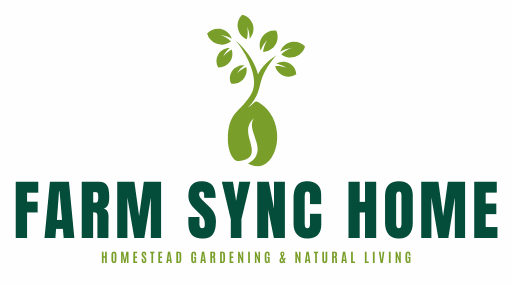

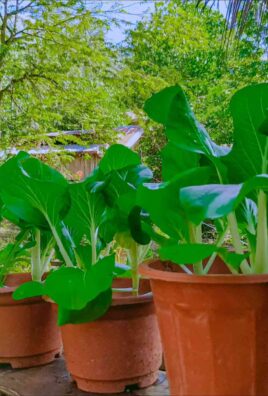

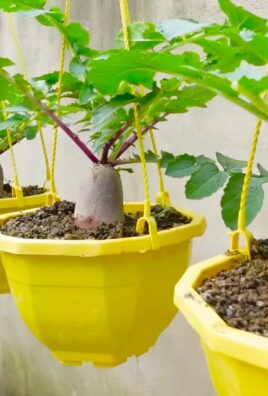
Leave a Comment